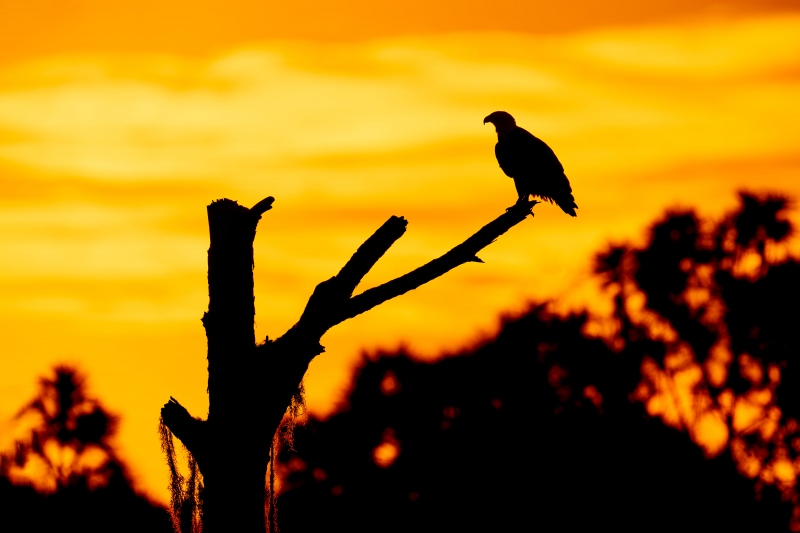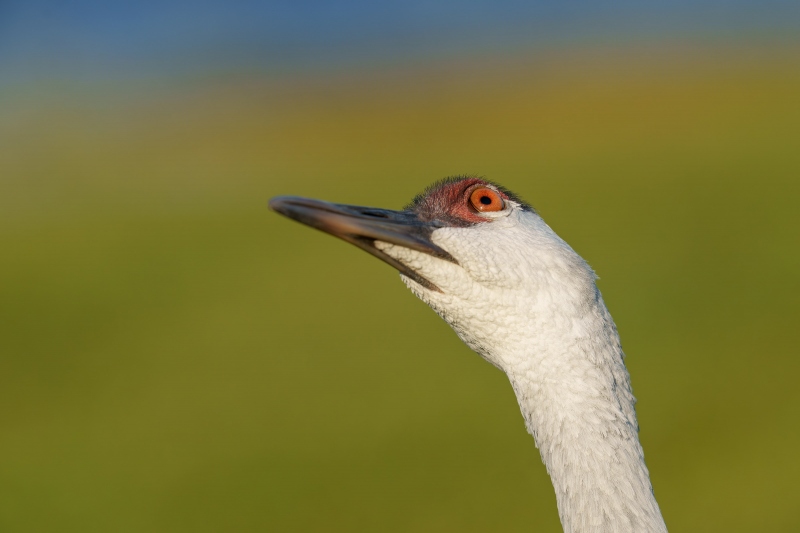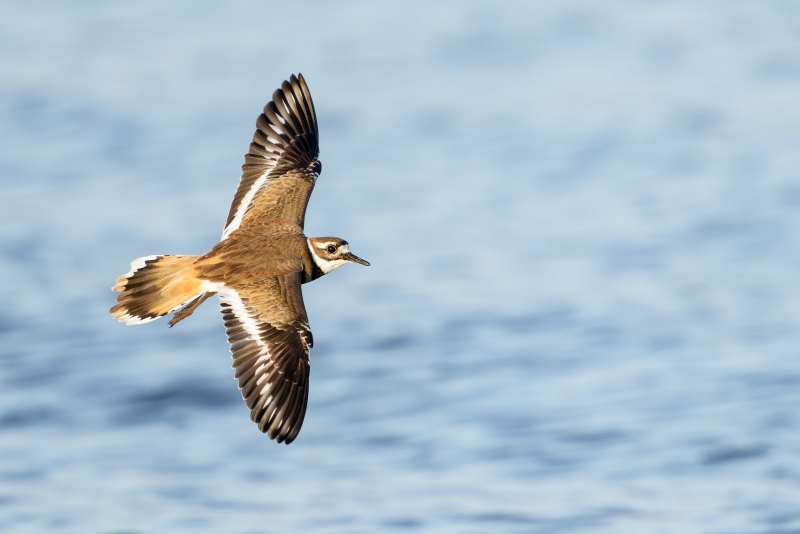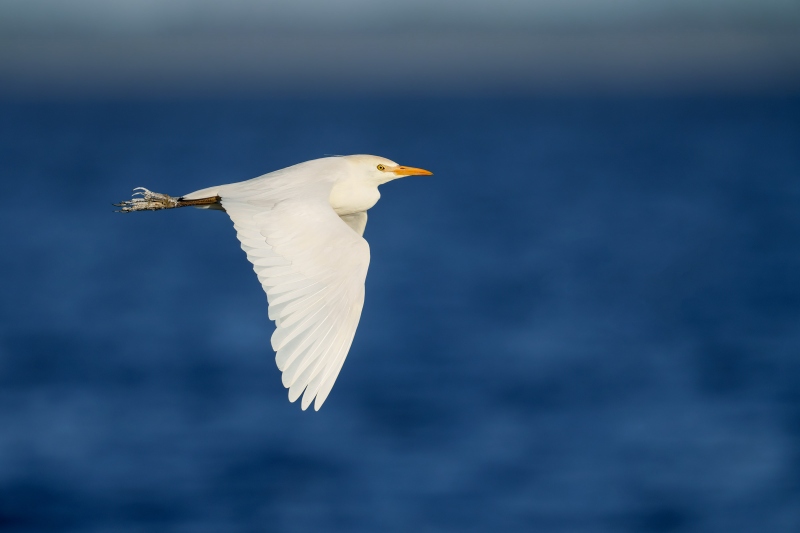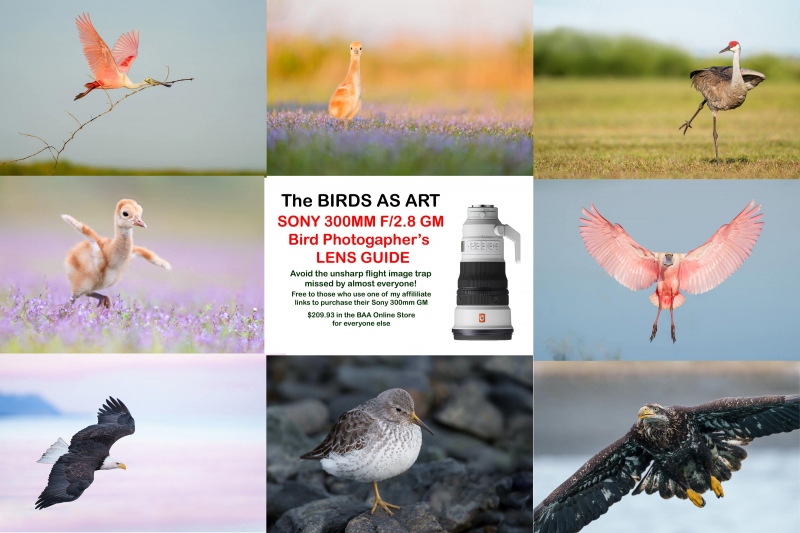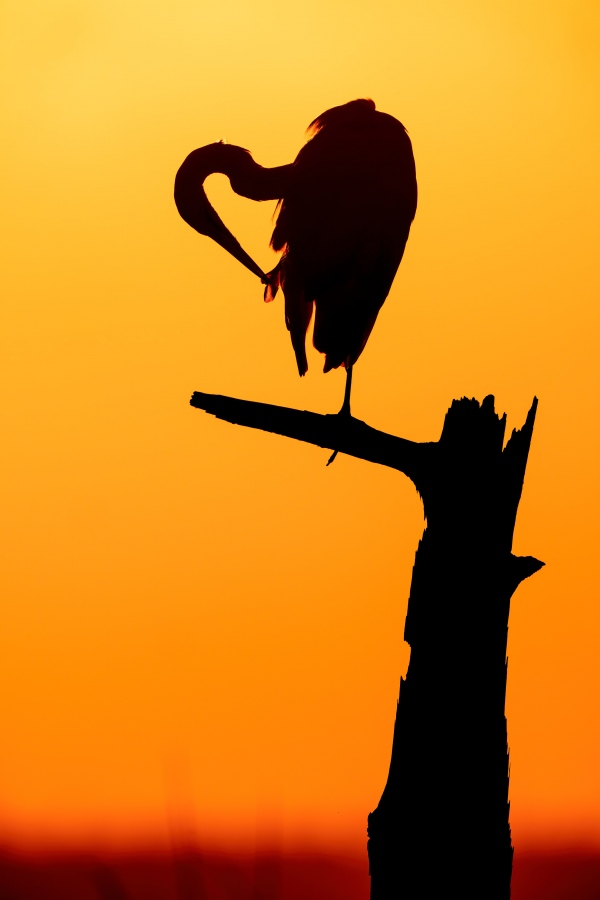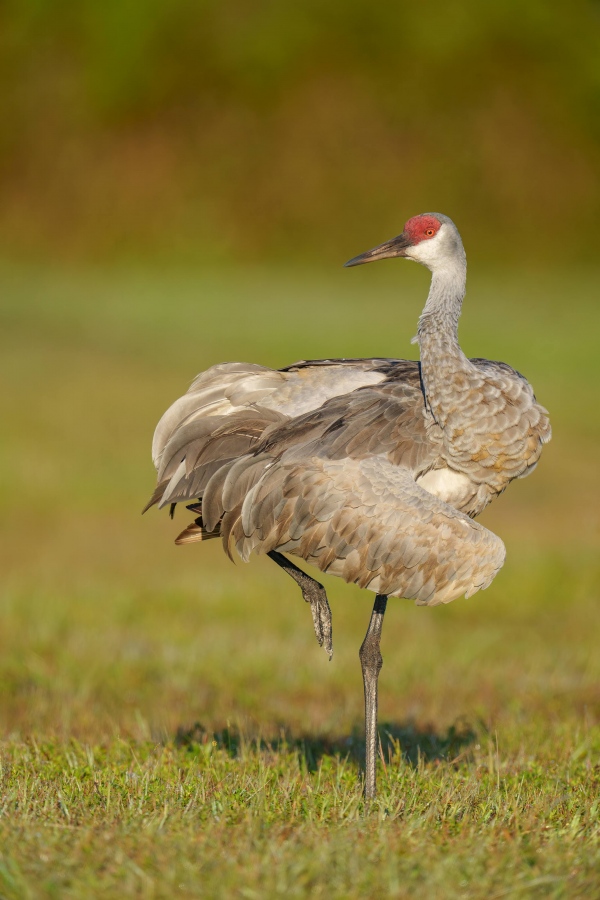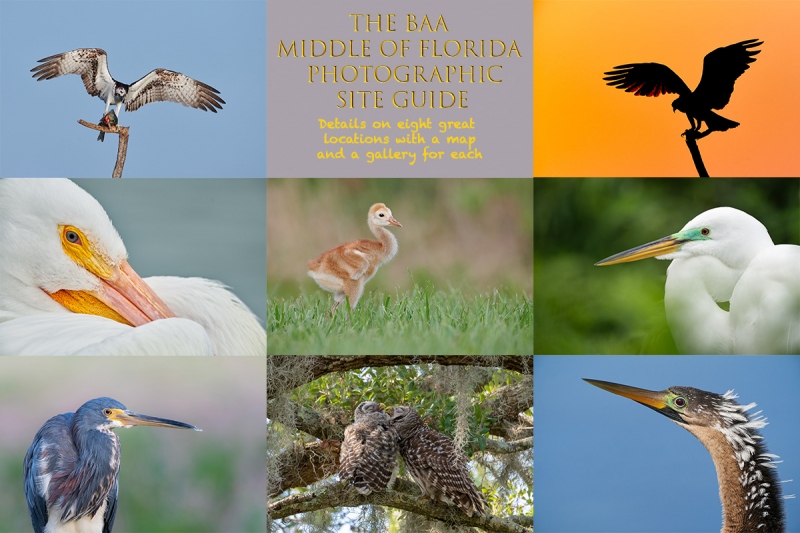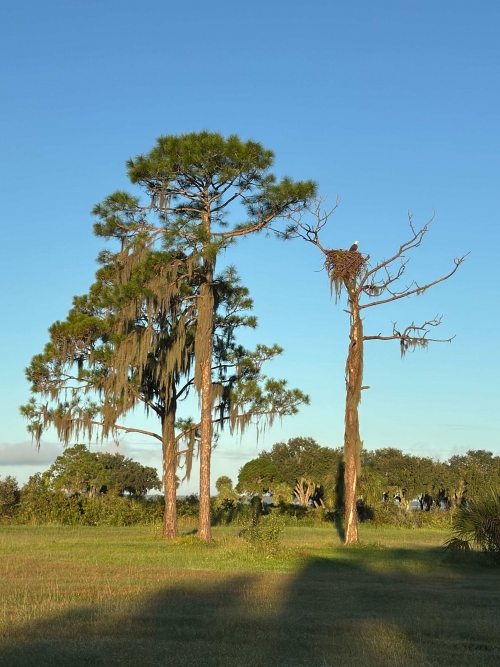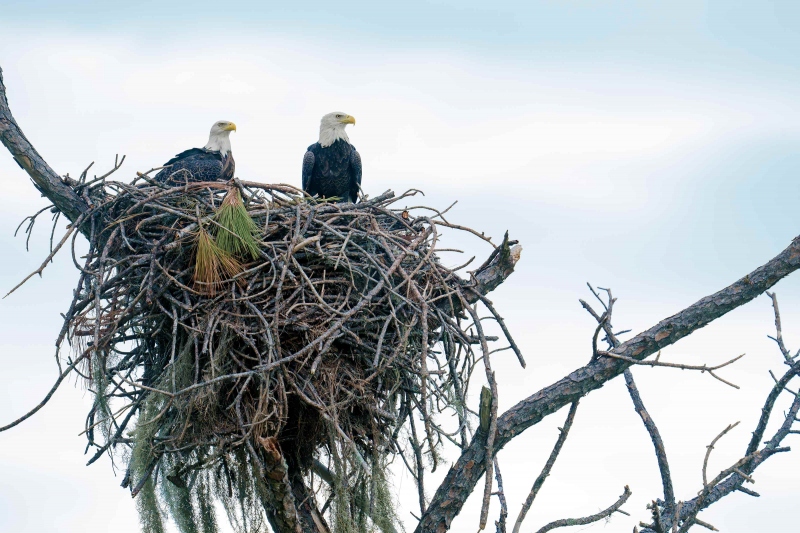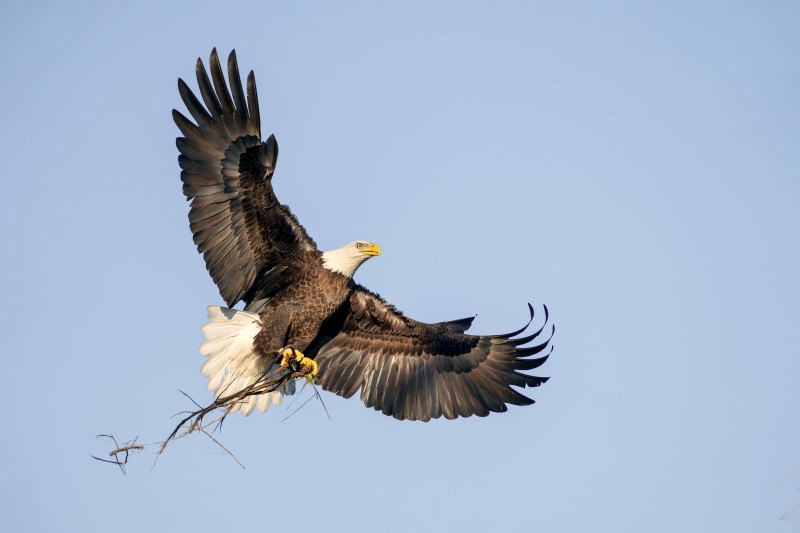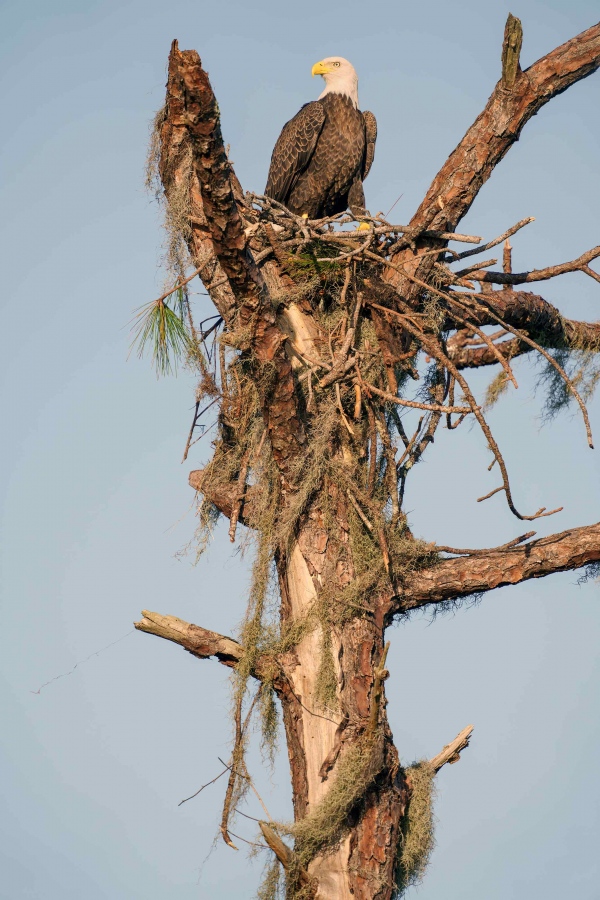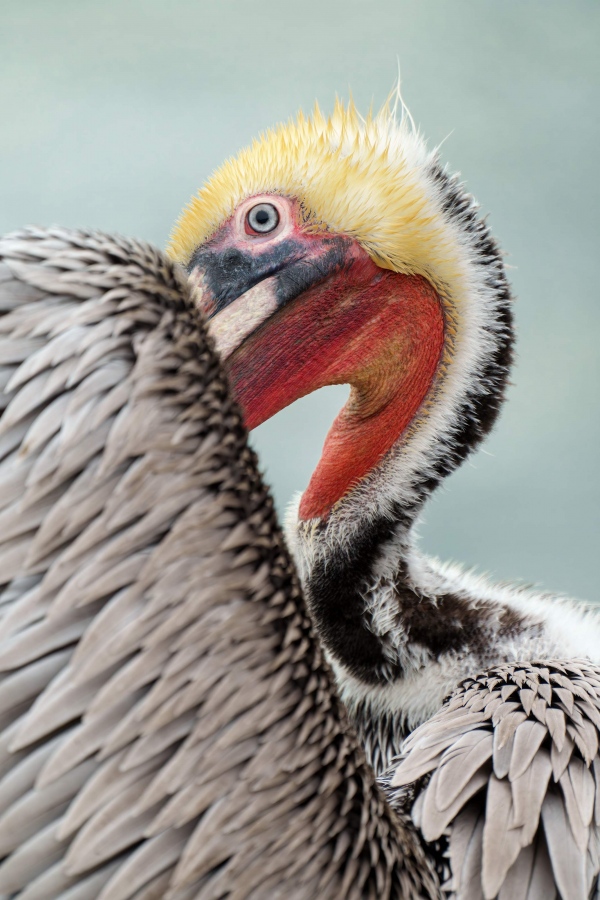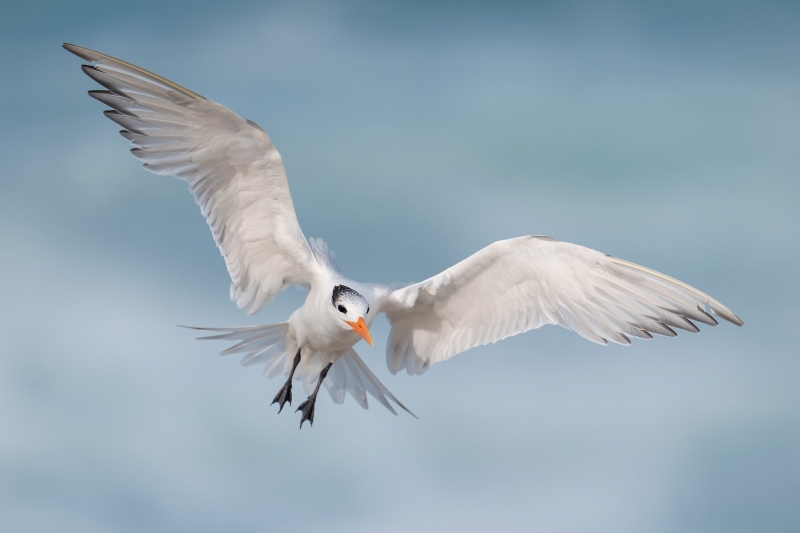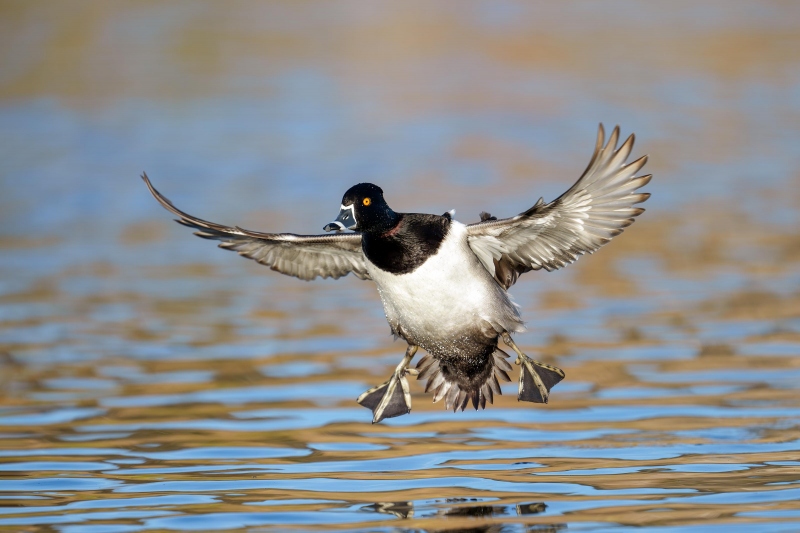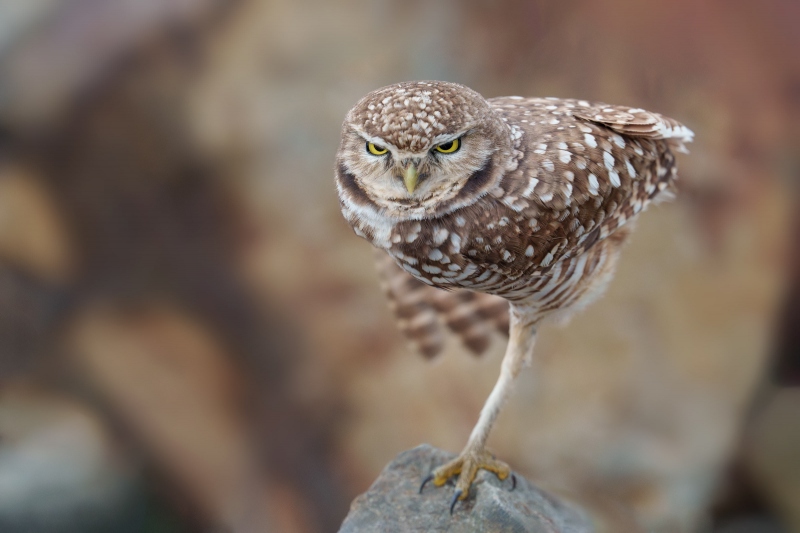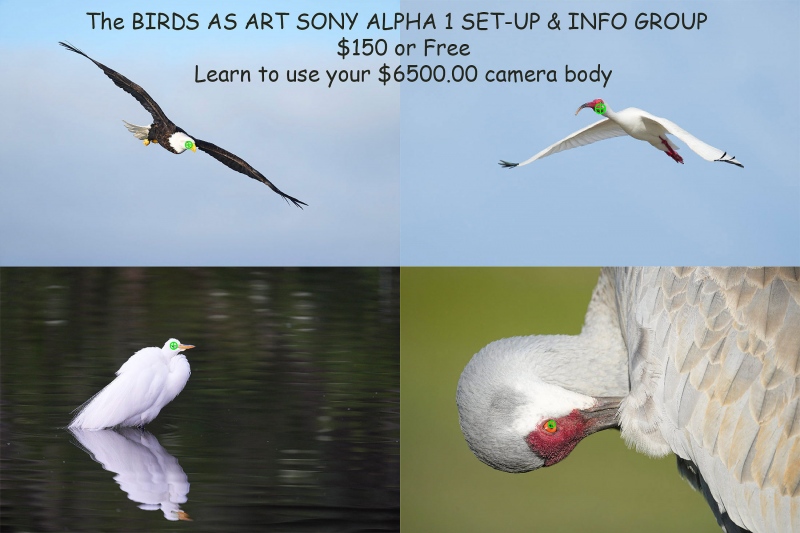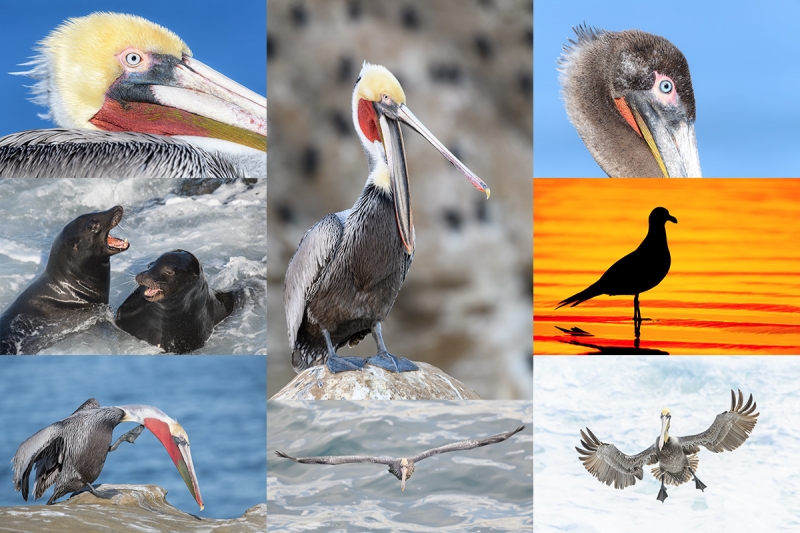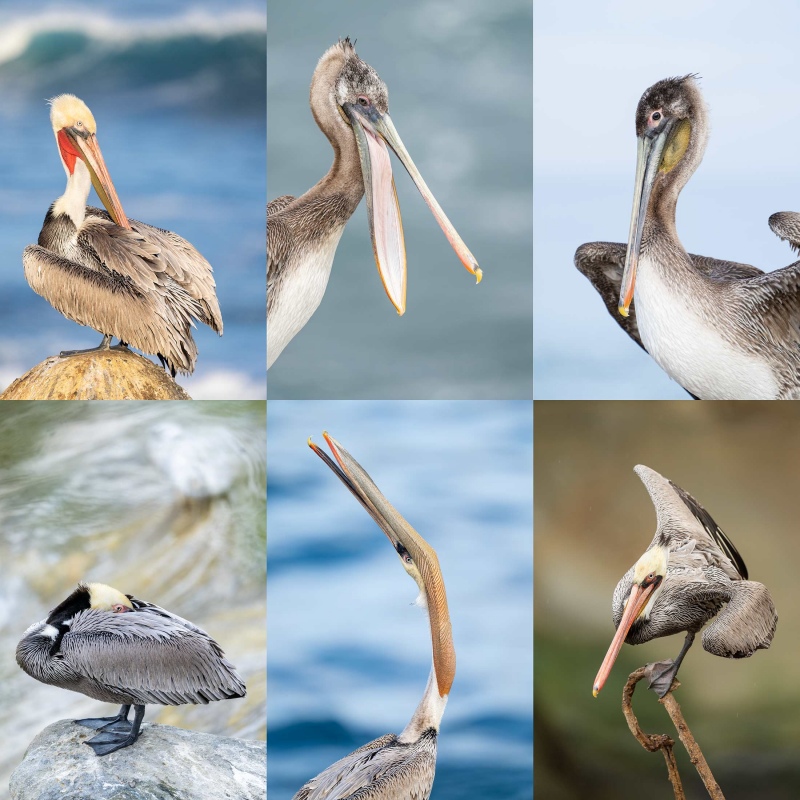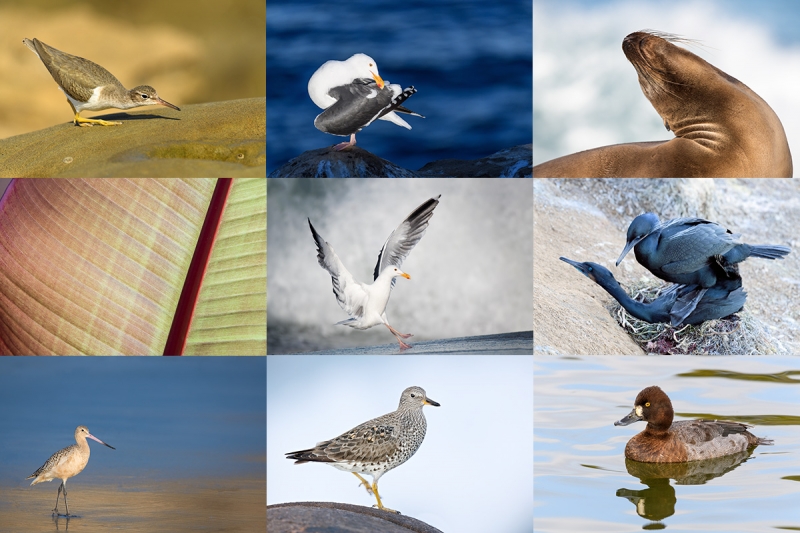October 26th, 2024 It’s Safe to go in the Water Now
Sony a-1 Firmware Update Update
Last spring, Sony announced firmware update v2.00 for the a-1, its flagship camera body. In short order the firmware story became an embarrassing fiasco. Over time, the announced v2.01 that caused terrible problems with the camera was used with the hugely popular 200-600 G lens. After some time, they released v2.02. About six weeks ago, with some trepidation, I purchased a used a-1 and updated it to v.2.01, and then to 2.02. I am happy to report that it is now possible to go back into the water.
The last update, v2.02, offers some great stuff for bird photographers.
v.2.02 Benefits
Battery life with 2.02 is fine. There are no issues with the 200-600 G lens. Bird Face-Eye AF is significantly improved. Formatting a card takes about two seconds as compared to 10 seconds or more with previous firmware versions. But the very best news is a brand new feature called Focus Recall. Huge thanks to Arash Hazeghi for pointing it out to me as we worked on an update to the Sony a-1 (a9 iii) flight guide. I took what he taught me about programming Preset Focus/Zoom to a single button for flight photography and turned it into what will surely turn out to be a huge game-changer for general bird photography.
I call it “double button focus recall.” I programmed two easy-to-reach (previously unassigned) buttons to PRESET Focus Distance. I can then register a close focusing distance to one button and a far focusing distance to the other. A tap of either button instantly brings me to either as needed.
Here is a practical, real life example. I am walking out on the pier. There are some very tame Turkey Vultures and a Limpkin perched on the railing. As I slowly approach the birds, I focus on the nearest one and then press and hold the near-focus button. Th camera registers the focus distance my current close focus distance. I might or might not create a few images. Before continuing my approach, however, I take a moment to focus on the end of the pier and this time I press and hold the far focus button. That becomes my far focus distance. Then I tap the close focus button for the birds on the railings and go to work.
I glance up and see an Osprey carrying a large Crappie in its talons flying over the end of the pier. I tap the AEL button to get to my pre-registered far focusing distance. The AF system will have a relatively easy time of seeing the subject. And once the bird is framed, initial focusing acquisition will be virtually instantaneous. Had the AF system been left at the close focusing distance (while working the birds on the pier railing), there is a good chance that the system would have been temporarily blind when I attempted to acquire focus on the Osprey in flight.
Understand that neither the close nor the far focusing distances need to be anywhere near precise. As long as the AF system is in the general neighborhood (as far as focusing distance is concerned), it will not struggle to acquire focus. Once the Osprey flies by, Artie simply taps the AF-On button to instantly get back to the approximate focusing distance for the birds on the railing.
Yesterday I sent the SONY Alpha a1 Set-up and Info Notes e-Mail J (23 OCT 2024) Firmware Update Update item to the entire group; it began like this:
Dear a1 Gang,
I hope that all of you are well, having fun, and making some great images. Big time thanks and congrats to the twenty folks in the group who have gotten my v2.02 settings onto their a-1 bodies. Many of them helped by letting me know of typos and other errors in the two instructional e-mails. After ten full days or working every morning with my v2.02 Firmware a-1, the 600mm f/4, and the 300mm f/2.8 (each with either TC), I can wholeheartedly recommend that most everyone with an a-1 would be best to update to Firmware v2.02.
If you are a member of the a-1 group and did not receive an e-Mail yesterday, please e-mail me with your current and correct e-mail address 🙂
a-1 Group members can receive the two e-mails by sending a PayPal for $50.00 (with the words a-1 v2.021/v2.02 Firmware updates in the Subject line) to birdsasart@verizon.net or by calling the office at 863-692-0906 with a credit card to pay the $50.00.
If you are not a member of my a-1 group and would like to update your camera body and get all of my current setting on it, you will need to either send a PayPal for $125.00 (with the words a-1 v2.021/v2.02 Firmware updates in the Subject line) to birdsasart@verizon.net or call Jim at 863-692-0906 with a credit card to pay the $125.00.
All of the images in today’s blog post were created with my v2.02 a-i mirrorless camera body.
Your Call
The challenge here today is to put today’s six featured images in order with the strongest one first and the weakest image (in your eyes) last. As each of the images is quite strong, you will need to put on your critiquing hat to sort them out. Be sure to click on each one to enlarge it. Don’t be a chump; have some fun and take a shot at the challenge. I will share my list in the next blog post that will feature the work of Geri Georg on the Nickerson IPT.
What’s Up?
After a long but relatively easy three-day drive, BAA friend Bob Eastman arrived from Wisconsin midday yesterday. We will be photographing together for the next five to six weeks. Including 26 days at Sebastian Inlet for diving Ospreys, Wood Storks, and more. Shoot me an e-mail if you would like to learn about joining us. Anyway, we headed down to the lake on Friday afternoon and had some fun and a few good chances. We will of course be heading down to the lake early this morning, Saturday 26 October 2024. We hope that you too choose to have a wonderful day.
Please remember to use the B&H links that are found on most blog pages and to use the BIRDSASART discount code at checkout when purchasing your new gear from Bedfords to get 3% back on your credit card and enjoy free second-day air FedEx. Please, also, consider joining a BAA IPT. You will be amazed at how much you will learn!
If an item — a Delkin flash card, or a tripod head — for example, that is available from B&H and/or Bedfords, is also available in the BAA Online Store, it would be great, and greatly appreciated, if you would opt to purchase from us. We will match any price. Please remember also to use my B&H affiliate links or to earn 3% cash back at Bedfords by using the BIRDSASART discount code at checkout for your major gear purchases. Doing either often earns you free guides and/or discounts. And always earns my great appreciation.
Supporting My Efforts Here
If you enjoy and learn from the blog, are all set for gear, or live overseas, consider leaving a BAA Blog Thank You Gift here.
If you enjoy and learn from the blog, please consider using one of my affiliate links when purchasing new gear. It will never cost you a single penny. To support my effort here, please order from B&H by beginning your search here. Or, click here, to order from Bedfords and enter the discount code BIRDSASART at checkout to receive 3% cash back to your credit card and enjoy free Second-Day Air Fed-Ex shipping. It is always best to write for advice via e-mail.
In many cases, I can help you save some serious dollars. And/or prevent you from purchasing the wrong gear. From the wrong shop.

Save 15%!
If you’d like to try out a new lens or if you need a lens for a specific trip or project (or for an IPT), LensRentals.com is the only way to go. To save 15%, simply click on the logo link above, arrange for your rental, and type in BIRDSASART15. If you type the gear you are looking for in the search box, it will pop right up. LensRentals.com offers affordable insurance. You can decline it, opt for LensCap: Damage Only, or select LensCap: Damage & Theft. Then hit PROCEED TO CHECKOUT. After you enter all of your info but before completing your order, be sure to scroll down to Promo Code box and enter the BIRDSASART15 code to save 15%.
I checked on renting a Sony FE 70-200mm f/2.8 GM OSS II lens for a week. The cost is only $122.00. LensCap: Damage Only coverage can be added for a very low $18.00. Going with LensCap: Damage & Theft would be $27.00. The shipping charge varies. They offer an interesting program called Lensrentals HD. By signing up for this shipping discount program ($99.00/year), you’ll get free Standard Shipping on all the orders you place.
Renting a Sony 600mm f/4 GM OSS lens for a week will cost you $536.00. The two coverage options come in at $76.00 or $114.00. Less your 15% discount when you enter the BIRDSASART15 code into the Promo Code box at checkout and enter the BIRDSASART15 code in the Promo Code box at checkout to save 15%.
Remember, to save the 15% on your rental you must start your search by clicking on the logo above, or on this link: LensRentals.com
Only One Possibility
Most mornings I walk out onto the pool deck 30 minutes before sunrise to check the eastern sky. If there are light clouds or some fog, I know that I need to get down to the lake earlier than on a dead clear morning because there will likely be some color in the eastern sky. That done, there are only two possible shots:
1- the old eagle nest tree lines up nicely with the orange and yellow sunrise colors as long as the sun is somewhat muted
2- the new eagle nest tree is also do-able. Early on Thursday morning, there was some decent color and there were a dozen perched Turkey Vultures near the nest that is being re-built. All the vultures, however, were facing east. Thus, they appeared headless in each of the hundred or so photos that I created. I kept one.
With Image #1 above, one of the eagle pair was perched on the old nest tree facing into the north wind. When he leaned forward slightly, the result was the best shot of the morning.
|
|
|
This image was created on 17 August down by the lake near my home. Working from the front seat of my SUV, I used the hand held Sony FE 300mm f/2.8 GM OSS Lens (Sony E) with the Sony FE 1.4x Teleconverter, and The One, the Sony a1 Mirrorless Camera. The exposure was determined via Zebra technology with ISO on the Thumb Dial. ISO 800: 1/1250 sec. at f/4 (wide open) in Manual mode. When evaluated in RawDigger, the raw file brightness was determined to be dead solid perfect. AWB at 8:22:18am on a sunny morning.
Tracking Zone/AF-C with Bird Face/Eye detection enabled performed to perfection. Be sure to click on the image to enjoy the high-res version.
Image #2: Sandhill Crane — 7-month old colt checking out fly-by Turkey Vulture
|
ILE Sandhill Strategies I
The ILE cranes are quite tame. Especially those that hang around all year and nest in the early spring in the marshes surrounding the lake. Before Hurricane Milton both fields and the South Peninsula were too wet to drive on. My only chances for making some quality crane images was to find a pair or a family of three near the roadway on sun angle. That was the situation with Image #2.
Though it is not easy to see in this image, the bird’s crown is pinker than the red crown of the adults. That makes the subject a hatch year bird.
|
|
|
This image was created on 22 October 2024 down by the lake near my home at Indian Lake Estates, FL. S of the pier, I used the handheld Sony FE 300mm f/2.8 GM OSS Lens (Sony E) with the Sony FE 2x Teleconverter and The One, the Sony Alpha 1 Mirrorless Digital Camera). The exposure was determined via Zebra technology with ISO on the Thumb Dial. ISO 2500. 1/3200 sec. at f/5.6 (wide open) in Manual mode. When evaluated in RawDigger, the raw file brightness was determined to be perfect (ho hum). AWB at 8:12:29am on sunny morning.
Zone/AF-C with Bird Face/Eye detection enabled performed to perfection. Be sure to click on the image to enjoy a high-res version.
Image #3: Killdeer adult in flight
|
Thank You Sony
I could never have imagined creating an image like this with any of the Canon to Nikon gear that I previously owned and used for 34 or three years respectively. Heck, I cannot imagine even trying to photograph a medium sized shorebird in flight before Sony. The 300mm f/2.8 with either TC is relatively small and light and is easy for most folks to hand hold for extended periods. A 600mm f/5.6 hand holdable rig with fast, deadly accurate tracking autofocus is a dream come true for aging bird photographers.
|
|
|
This image was also created on 22 October 2024 down by the lake near my home at Indian Lake Estates, FL. Walking on the pier, I used the handheld Sony FE 300mm f/2.8 GM OSS Lens (Sony E) with the Sony FE 2x Teleconverter and The One, the Sony Alpha 1 Mirrorless Digital Camera). The exposure was determined via Zebra technology with ISO on the Thumb Dial. ISO 800. 1/4000 sec. at f/5.6 (wide open) in Manual mode. When evaluated in RawDigger, the raw file brightness was determined to be dead solid perfect (ho hum). AWB at 8:47:35am on sunny morning.
Zone/AF-C with Bird Face/Eye detection enabled performed to perfection. Be sure to click on the image to enjoy a high-res version.
Image #4: Cattle Egret adult with dirty feet in flight
|
Walking the Pier
When I first get down to the lake on sunny mornings at this time of year, there are often dozens of Cattle Egrets either standing on the railings of the pier or on the deck, chowing down on zillions of tiny flying bugs. They are often joined by a Great Blue, Little Blue, Green, or Tricolored Heron, a Great Egret, an Anhinga or three, and an Osprey or a or Bald Eagle. I almost always prefer to stay in my vehicle and drive around to see what’s up. Almost inevitably, a fisherman or two heads out to the end of the pier after Crappies, Bluegills, and the occasional Large-mouthed Bass. And invariably, all of the birds that were on the pier leave. Yikes, I almost forgot: there are often dozens of vultures on the railings at the base of the pier.
Anyhoo, after my vehicular photo search along the lakefront, I will usually return to the parking circle near the pier, park, grab a lens, take off my shirts, and walk the pier. At times, some of the birds have returned to the railings. On the morning of the 22nd there were perhaps a dozen and a half Cattle Egrets on the railings. I stayed to the left side of the pier in hopes of having the birds take off into the northeast wind. All but a few took fight to the south 🙁 Several however, including the beauty in Image #4, took off to the north and then gently turned right 🙂 I came up with this one in full downstroke as it was right down sun angle. Lots of knowledge, the right light with the right wind, great gear, a modicum of skill, and a bit of luck all came together serendipitously. The more I work with the Sony 300mm f/2.8 and the 2X, the more confident I become not only in the gear but in my ability to use it effectively for flight photography, that is, to quickly find the bird in the viewfinder and then keep it in the middle of the frame while panning!
|
|
|
Those who did not use my link to purchase their Sony 300mm f/2.8 GM lens, can order their a copy here for $209.93.
Click on the image to enlarge and to be able to read the fine print.
|
The BAA Sony 300mm f/2.8 Lens Guide
Impressed by my Sony FE 300mm f/2.8 GM OSS Lens (Sony E) images? Use either my Bedfords or B&H affiliate link to purchase your Sony 300mm f/2.8 GM lens and shoot me your receipt via e-mail and request a copy of the first-ever BAA Lens Guide. I thought that it would take only minutes to create this guide, but I was dead wrong. In the process of creating it, I learned a ton about the lens. And even better, I discovered a simple yet potentially fatal flaw that was resulting in sporadically unsharp flight images. The set-up fix is simple. Just be sure to use one of my affiliate links and get the guide for free.
If not, you can purchase a copy here for $209.93. Yes, it never hurts to use my links and it never costs you one penny more. And if you contact me via e-mail before you make a major purchase, I can often save you some money.
|
|
|
This image was created on 23 October 2024 down by the lake near my home at Indian Lake Estates, FL. Working from the driver’s seat of my SUV, I used the BLUBB-supported Sony FE 600mm f/4 GM OSS lens, the Sony FE 2.0x Teleconverter, and The One, the Sony Alpha 1 Mirrorless Digital Camera). The exposure was determined via Zebra technology with ISO on the thumb dial. ISO 640. 1/4000 sec. at f/10 (stopped down 2/3 stop) in Manual mode. When evaluated in RawDigger, the raw file exposure was determined to be perfect. AWB at 6:28:28pm with some light fog on the western horizon.
Tracking: (upper) Zone AF-C with Bird Face/Eye detection enabled performed perfectly even at 1200mm. Be sure to click on the image to enjoy a high-res version.
Image #5: Great Egret on The Perch II at sunset
|
Sunsets
Late afternoons down by the lakeshore at ILE are difficult as when you have the sun at your back, you will often have houses in the background. I had not been down much in the afternoons, but for some reason I headed down for a shirtless pier walk a bit after 6:00pm on Wednesday past. Before I pulled into the circular lot, I spotted a Great Egret on The Perch II, the perch that I erected several years ago with the help of my neighbor Ralph. “Fat chance,” I thought as I headed onto the pier, “that the bird will still be on the perch when I get back to my car in 25 minutes.” But it was.
I drove onto the North Field and picked a spot with some brightly color sky as a background while making sure that the sun was not in the frame. As the sun made its way down and west, it seemed that at some point the sun would have been right behind the bird so I was excited by the possibility of a sun ball shot. Only minutes before the magical moment would have materialized with everything lined up, the bird took flight and headed to its evening roost somewhere to the south.
|
|
|
This image was created on 25 October 2024 down by the lake near my home at Indian Lake Estates, FL. Working from the driver’s seat of my SUV, I used the BLUBB-supported Sony FE 600mm f/4 GM OSS lens, with the Sony FE 1.4x Teleconverter, and The One, the Sony Alpha 1 Mirrorless Digital Camera.. ISO 640. The exposure was determined by Zebras with ISO on the rear wheel: 1/1250 second at f/6.3 (stopped down 1/3 stop) in Manual mode. RawDigger showed that the exposure was perfect. AWB at 8:26:40am on sunny morning with just a bit of haze in front of the sun.
Tracking: Expand Spot/AF-C with Bird-Eye/Face Detection performed perfectly. Click on the image to enjoy the high-res version.
Image #6: Sandhill Crane adult preening pose
|
ILE Sandhill Strategies II
Surprisingly, the last storm did not bring much rain at all to Polk County. Since then it has been bone-dry and most of the fields are safely drivable. In the mornings, there are generally several pairs of cranes and the single crane family from last season standing still on the grass preening. When the birds are having a preening party, they will often keep preening for 30 to 45 minutes before they begin walking, usually east, in search of bugs and roots and tubers.
As the fields are all pretty much dry and the birds are exceedingly tame, you can drive right up to them if you wish. You are free to pick your distance. Sometimes I get within twenty feet of them to go for tight preening head shots — yes, in the vehicle, and sometimes I stay back to photograph the whole bird. Adding the 1.4X TC allowed me to work from a distance while reducing the angle of declination to the bird.
Most of the time the bird had its head buried in its feathers, but occasionally it would raise its head and look back over its body. I moved the AF spot so that would cover the eye once it yielded the pose I wanted. Bingo! It always pays to understand bird behavior and to plan for the best case.
|
|
The BAA Middle of Florida Photographic Site Guide
You can purchase your copy here in the BAA Online Store.
|
The BAA Middle of Florida Photographic Site Guide
126 pages, 87 photographs by Joe Przybyla and Arthur Morris.
The PDF for this e-Guide is an electronic download sent via e-mail.
Purchase your copy here in the BAA Online Store.
I had thought about doing a guide to some of the great but little-known photo hotspots around central Florida for about a decade, but those plans never came to fruition. I met Joe online in the Avian Forum at BirdPhotographer’s.Net about two years ago. Joe’s photography has improved tremendously over the past few years; he credits the BAA blog, my books and PDFs, and his participation on BPN. The one thing that I learned right from the get-go about Joe is that he is a hard and tenacious worker, always striving to improve his skills and to grow his knowledge base. As he knew of more than a few good spots in central Florida, I broached the idea of us doing a photographic site guide that covered many of the little-known photographic hotspots from Brandon to Lakeland to Joe Overstreet Road to Indian Lake Estates (my Florida home for the past 20 years or so). After more than many, many dozens of hours of effort, The BIRDS AS ART Middle of Florida Photographic Site Guide is now a reality. Thanks to Joe’s wife Dottie for her review of our writing. We all learned once again that writing is a process, a back-and-forth process. All thanks to the white pelicans of Lakeland. Below are the locations that are detailed in this e-Guide. Please note that Gatorland no longer offers a Photographer’s Pass.
- Indian Lake Estates: Sandhills Cranes with chicks and colts, lots of vultures, and Ospreys up the kazoo!
- Gatorland, Kissimmee: Learn to make great images of wading birds in a cluttered rookery.
- The Brandon Rookery: Great for nesting Wood Storks, Great Egrets, and more.
- Circle Bar B Reserve, Lakeland: Here you will find a great variety of avian subjects in a great variety of habitats.
- Lake Morton, Lakeland: There are lots of silly tame birds here including and especially American White Pelican during the colder months.
- Lake Mirror, Lakeland: Tame Anhingas, Limpkins, and a zillion White Ibises at times.
- West Lake Parker, Lakeland: Here, if you are lucky, you will have a chance for two difficult birds: Snail Kite, and Purple Gallinule.
- Joe Overstreet Road, Kenansville: Crested Caracara, meadowlarks, Loggerhead Shrike, and much more on the fenceposts and barbed wire.
Each location includes a map, a detailed description of the best spots, best season, light and time of day instructions, the expected species, and an educational and inspirational gallery that is designed to open your eyes as to the possibilities.
You can purchase a copy here in the BAA Online Store.
Typos
With all blog posts, feel free to e-mail or to leave a comment regarding any typos or errors.
October 24th, 2024 What’s Up?
Steve Zarate sold all of his Canon items, including the near mint RF 600mm f/4L IS lens, within two days of their being listed in the last blog post.
Yesterday I sent the SONY Alpha a1 Set-up and Info Notes e-Mail J (23 OCT 2014) Firmware Update Update item to the entire group; it began like this:
Dear a1 Gang,
I hope that all of you are well, having fun, and making some great images. Big time thanks and congrats to the twenty folks in the group who have gotten my v2.02 settings onto their a-1 bodies. Many of them helped by letting me know of typos and other errors in the two instructional e-mails. After ten full days or working every morning with my v2.02 Firmware a-1, the 600mm f/4, and the 300mm f/2.8 (each with either TC), I can wholeheartedly recommend that most everyone with an a-1 would be best to update to Firmware v2.02.
If you are a member of the a-1 group and did not receive an e-Mail yesterday, please e-mail me with your current and correct e-mail address 🙂
If you are not a member of my a-1 group and would like to update your camera body and get all of my current setting on it, you will need to either send a PayPal for $125.00 (with the words a-1 v2.021/v2.02 Firmware updates in the Subject line) to birdsasart@verizon.net or call Jim at 863-692-0906 with a credit card to pay the $125.00.
Today is Thursday 24 October 2024. It is another gorgeous early fall day here at ILE. I just got back from the lake and there was not much going on so I headed home early. I have not seen the eagles for two days. I am pretty sure that they are out fishing. I hope that you too choose to have a wonderful day.
Please remember to use the B&H links that are found on most blog pages and to use the BIRDSASART discount code at checkout when purchasing your new gear from Bedfords to get 3% back on your credit card and enjoy free second-day air FedEx. Please, also, consider joining a BAA IPT. You will be amazed at how much you will learn!
If an item — a Delkin flash card, or a tripod head — for example, that is available from B&H and/or Bedfords, is also available in the BAA Online Store, it would be great, and greatly appreciated, if you would opt to purchase from us. We will match any price. Please remember also to use my B&H affiliate links or to earn 3% cash back at Bedfords by using the BIRDSASART discount code at checkout for your major gear purchases. Doing either often earns you free guides and/or discounts. And always earns my great appreciation.
Supporting My Efforts Here
If you enjoy and learn from the blog, are all set for gear, or live overseas, consider leaving a BAA Blog Thank You Gift here.
If you enjoy and learn from the blog, please consider using one of my affiliate links when purchasing new gear. It will never cost you a single penny. To support my effort here, please order from B&H by beginning your search here. Or, click here, to order from Bedfords and enter the discount code BIRDSASART at checkout to receive 3% cash back to your credit card and enjoy free Second-Day Air Fed-Ex shipping. It is always best to write for advice via e-mail.
In many cases, I can help you save some serious dollars. And/or prevent you from purchasing the wrong gear. From the wrong shop.

Save 15%!
If you’d like to try out a new lens or if you need a lens for a specific trip or project (or for an IPT), LensRentals.com is the only way to go. To save 15%, simply click on the logo link above, arrange for your rental, and type in BIRDSASART15. If you type the gear you are looking for in the search box, it will pop right up. LensRentals.com offers affordable insurance. You can decline it, opt for LensCap: Damage Only, or select LensCap: Damage & Theft. Then hit PROCEED TO CHECKOUT. After you enter all of your info but before completing your order, be sure to scroll down to Promo Code box and enter the BIRDSASART15 code to save 15%.
I checked on renting a Sony FE 70-200mm f/2.8 GM OSS II lens for a week. The cost is only $122.00. LensCap: Damage Only coverage can be added for a very low $18.00. Going with LensCap: Damage & Theft would be $27.00. The shipping charge varies. They offer an interesting program called Lensrentals HD. By signing up for this shipping discount program ($99.00/year), you’ll get free Standard Shipping on all the orders you place.
Renting a Sony 600mm f/4 GM OSS lens for a week will cost you $536.00. The two coverage options come in at $76.00 or $114.00. Less your 15% discount when you enter the BIRDSASART15 code into the Promo Code box at checkout and enter the BIRDSASART15 code in the Promo Code box at checkout to save 15%.
Remember, to save the 15% on your rental you must start your search by clicking on the logo above, or on this link: LensRentals.com
|
|
|
This image was created on 23 September 2024 down by the lake near my home at Indian Lake Estates, FL. I used my iPhone 15+.
Image #1: The 2024 Bald Eagle nest before either hurricane
|
Before Either of the 2024 Hurricanes
In this image, made before the hurricanes, one of the adult Bald Eagles sits in the 2024 nest, just hanging out on a beautiful early fall morning. Note the sun angle and the two healthy pine trees just to the south (our left) of the nest tree. Compare this with Image #4 and note that the large branch on the upper was brought down by Hurricane Milton, along, of course, with the entire nest. In Image #3, the flight shot, the bird was below the spot that this branch had occupied. With a nice blue sky background.
|
|
|
This image was also created on 26 September 2024 down by the lake near my home at Indian Lake Estates, FL. Working from the driver’s setoff my SUV I used the BLUBB supported Sony FE 600mm f/4 GM OSS lens and The One, the Sony Alpha 1 Mirrorless digital camera. ISO 1600. Exposure was determined via Zebras with ISO on the rear dial: 1/500 sec. at f/4 (wide open). AWB at 8:26:09am on a cloudy morning.
Tracking: Expand Spot/AF-C with Bird Face-eye enabled was active at the moment of exposure and performed perfectly. Be sure to click on the image to enjoy the larger version.
Image #2: Bald Eagle pair on nest
|
Pre-Helene
This is the nest that the pair used in early 2024 to fledge two healthy chicks. Hurricane Helene would pass by well to the northwest about 18 hours after this image was created. Just as most of Polk County was unscathed by Helene, this nest survived the first hurricane intact.
|
|
|
This image was created on 21 October 2024 down by the lake near my home at Indian Lake Estates, FL. Seated in the driver’s seat of my SUV, I used the handheld Sony FE 300mm f/2.8 GM OSS Lens (Sony E) with the Sony FE 2x Teleconverter and The One, the Sony Alpha 1 Mirrorless Digital Camera). The exposure was determined via Zebra technology with ISO on the Thumb Dial. ISO 1250. 1/4000 sec. at f/5.6 (wide open) in Manual mode. When evaluated in RawDigger, the raw file brightness was determined to be perfect (ho hum). AWB at 8:39:59am on sunny morning.
Zone/AF-C with Bird Face/Eye detection enabled performed to perfection. Be sure to click on the image to enjoy a high-res version.
Image #3: Bald Eagle flying in with sticks for new nest
|
Quickly to the Task
Hurricane Milton blew through Polk County in the early morning of 27 September. In the recent Hurricane Milton BIRDS AS ART blog post here, I shared photos of both the huge old nest and the large newer nest that had blown down in the South Field during the storm. Not a branch of the old 2024 nest remained. Within days, the pair began to rebuild a nest in the same spot.
Sky Conditions, Wind Direction, and Bird Photography
After their fast start, the birds continued adding sticks to the crotch of the previous year’s nest tree. There are two live pines just to the left (south) of the then pretty bare tree. With the wind from the NE, I positioned my SUV so that I could catch the eagle in the clear to the right of the live pine on the right and to the left of the nest after it had flown past the nest and then turned northeast to fly up to the nest. All that while being fairly close to sun angle.
The best way to learn to figure out stuff like this, the relationship of sky conditions and the wind direction to bird photography is to join me on an IPT.
I can’t wait until they start flying in with the big lumber. Somewhat surprisingly, I have not seen the eagles grab sticks from the previous year’s nest, now on the ground right below the nest tree. Nor have they been grabbing nests from the huge old nest, on the ground about 200 yards to the north.
High Level Question
Can you see anything in image #3 to indicate that there was a live pine tree just out of frame on our left?
|
|
|
This image was created on 21 October 2024 down by the lake near my home at Indian Lake Estates, FL. Seated in the driver’s seat of my SUV, I used the handheld Sony FE 300mm f/2.8 GM OSS Lens (Sony E) with the Sony FE 2x Teleconverter and The One, the Sony Alpha 1 Mirrorless Digital Camera). The exposure was determined via Zebra technology with ISO on the Thumb Dial. ISO 1250. 1/4000 sec. at f/5.6 (wide open) in Manual mode. When evaluated in RawDigger, the raw file brightness was determined to be perfect (ho hum). AWB at 8:38:59am on sunny morning.
Upper Center)( Tracking: Expand Spot/AF-C with Bird Face/Eye detection enabled performed to perfection. Be sure to click on the image to enjoy a high-res version.
Image #4: Bald Eagle at new nest
|
20 Seconds Later
Twenty seconds later, the bird sat on the new (somewhat scrawny) nest for a moment before taking flight. With only three AF methods checked on my a-1 bodies I switch between them by hitting the Thumb Dial. Thus, getting from Zone to Tracking Expand Spot took less than one second. Moving the AF point up in the vertical frame took another two seconds. Bingo — I was able to create a sharp story telling image in not much time.
As I said to my accountant Chip on the phone last night, you need to act very quickly when doing bird photography. One or two seconds lost while fumbling with the camera controls can cost you a once in a lifetime image. BTW, though Chip’s home in Clearwater Beach was spared by Milton, the damage from Helene wound up being devastating. He had one foot of saltwater in his house; all the flooring and much of the drywall needs to be replaced. And lots of the furniture was ruined.
The Sony a-1 (v2.02)/2X TC/300mm f/2.8 Rig
For more than a year, I have shied away from using the 2X TC with the handheld 300mm f/2.8 lens. Recently, I have been working with that combo both from the car and on my pier sun walks. With my increased confidence have come a slew of fantastically sharp images. Imagine having a lightweight, easy to work with 600mm f/5.6 lens that can be handheld for hours. Goodbye to tripods!
|
|
|
Those who did not use my link to purchase their Sony 300mm f/2.8 GM lens, can order their a copy here for $209.93.
Click on the image to enlarge and to be able to read the fine print.
|
The BAA Sony 300mm f/2.8 Lens Guide
Impressed by my Sony FE 300mm f/2.8 GM OSS Lens (Sony E) images? Use either my Bedfords or B&H affiliate link to purchase your Sony 300mm f/2.8 GM lens and shoot me your receipt via e-mail and request a copy of the first-ever BAA Lens Guide. I thought that it would take only minutes to create this guide, but I was dead wrong. In the process of creating it, I learned a ton about the lens. And even better, I discovered a simple yet potentially fatal flaw that was resulting in sporadically unsharp flight images. The set-up fix is simple. Just be sure to use one of my affiliate links and get the guide for free.
If not, you can purchase a copy here for $209.93. Yes, it never hurts to use my links and it never costs you one penny more. And if you contact me via e-mail before you make a major purchase, I can often save you some money.
Typos
With all blog posts, feel free to e-mail or to leave a comment regarding any typos or errors.
October 21st, 2024 Your Call?
Which of today’s five featured image is your favorite? Why did you make your choice? I love them all but have a clear favorite.
My Call and Reasons
In the Tricolored Heron Second Edit YouTube Video blog post here, my favorite was Image #2, the Tricolored Heron non-breeding adult vertical front-end portrait. Why? I loved the soft light, the perfect image design and head turn, and best of all, the great look at the fluffed up purple ruff on the bottom of the bird’s long neck. The first image had some motion blur on the bill.
What’s Up?
There are just two spots open on the San Diego IPT. Change your life by grabbing one of them. Scroll down for details.
Much to the Morris family’s dismay, the Amazing New York Mets finally ran out of miracles, losing to the Dodgers in Game 6 of the NLDS. that said, they surely had an unexpectedly wonderful year. This year’s World Series will be a rerun of my early childhood: Dodgers versus Yankees. I might actually be rooting for the Yankees.
Today is Monday 21 October. I headed down to the lake early and was glad to see the eagle pair building a new nest in the tree that they used last year. The old nest blew down in Hurricane Milton. Strange that both nests blow down with Milton after surviving Helen and Ian, the latter in late September 2022. As it was rather chilly with a north wind, I took an early sun walk and headed home for breakfast before 8:00am. Whatever you are doing, I hope that you have a great day.
Please remember to use the B&H links that are found on most blog pages and to use the BIRDSASART discount code at checkout when purchasing your new gear from Bedfords to get 3% back on your credit card and enjoy free second-day air FedEx. Please, also, consider joining a BAA IPT. You will be amazed at how much you will learn!
If an item — a Delkin flash card, or a tripod head — for example, that is available from B&H and/or Bedfords, is also available in the BAA Online Store, it would be great, and greatly appreciated, if you would opt to purchase from us. We will match any price. Please remember also to use my B&H affiliate links or to earn 3% cash back at Bedfords by using the BIRDSASART discount code at checkout for your major gear purchases. Doing either often earns you free guides and/or discounts. And always earns my great appreciation.
Supporting My Efforts Here
If you enjoy and learn from the blog, are all set for gear, or live overseas, consider leaving a BAA Blog Thank You Gift here.
If you enjoy and learn from the blog, please consider using one of my affiliate links when purchasing new gear. It will never cost you a single penny. To support my effort here, please order from B&H by beginning your search here. Or, click here, to order from Bedfords and enter the discount code BIRDSASART at checkout to receive 3% cash back to your credit card and enjoy free Second-Day Air Fed-Ex shipping. It is always best to write for advice via e-mail.
In many cases, I can help you save some serious dollars. And/or prevent you from purchasing the wrong gear. From the wrong shop.
Canon RF 600mm f/4 L IS USM Lens (with Extras)
Used Gear Page regular Stephen Zarate is offering a Canon RF 600mm f/4 L IS USM Lens in like-new condition for a ridiculously low $9,499.00. The sale includes a RSS LCF-53 lens plate, a LensCoat, the original box and everything that came in it including the rear cap, the front lens cover, the lens bag, the lens strap, and insured ground shipping via UPS to lower-48 US addresses only.
Please contact Steve via e-mail.
Whatever system you are using, the 600mm f/4 lenses are the be-all and end-all for bird photography. This super-sharp lens weighs only one ounce more than the Sony 600mm and is nicely balanced for hand holding with most of the weight to the rear. It sells new for $12,999.00 at B&H and there are virtually no used copies available. I did find one listed for $11,149.00! Get in touch with Steve ASAP to purchase his pretty much new lens while saving a handsome $3,500.00. artie
Canon EOS R5 Mirrorless Camera Body (with Extras)
Used Gear Page regular Stephen Zarate is offering a Canon EOS R5 Mirrorless Camera Body in excellent plus condition for $1699.00. The sale includes the original box, the front body cap, six batteries (five extra — a $79.00 @ value), a Canon Mount Adapter EF-EOS R (a $129.00 value), and insured ground shipping via UPS to lower-48 US addresses only. Note: the sale does not include the battery charger.
Please contact Steve via e-mail.
I owned and used an R5 (and an RF 100-500) when they first came out so that I was able to write the EOS R5/R6 Camera User’s Guide. I enjoyed using it and made lots of excellent images in short order. If you are looking to get into Canon mirrorless, you’d be smart to grab Stephen’s R5 right now. artie
Canon Extender RF 2X (Teleconverter)
Used Gear Page regular Stephen Zarate is offering a Canon Extender RF 2X (Teleconverter) in like-new condition for the bargain price of $399.00. The sale includes the original box, the front and rear caps, the pouch, and insured ground shipping via UPS to lower-48 US addresses only.
Please contact Steve via e-mail.
Regular readers know that I have been using my Canon and Sony 2X TCs with my 600 lenses with great success for several decades. Save $200.00. artie
|
|
|
This image was created on 24 January 2024 on a San Diego IPT. Crouching a bit, I used the handheld Sony FE 70-200mm f/2.8 GM OSS II lens with the Sony FE 2x teleconverter (at 400mm), and The One, the Sony Alpha 1 Mirrorless Digital Camera.. The exposure was determined via Zebras with ISO on the Thumb Dial. ISO 1250: 1/1000 sec. at f/5.6 (wide open) in Manual mode. AWB at 9:33:58am on a cloudy morning.
Tracking: (upper center) Zone AF/C with Bird-Eye/Face Detection performed perfectly in a difficult situation. Click on the image to enjoy a high-res version.
Image #1: Brown Pelican — Pacific race breeding plumage preening
|
Peashooter Rig
On cloudy- fairly bright days when I feel like leaving the 600 in my rental car, I will head down the steps with just the 70-200mm f/2.8 GM II lens/a-1 rig — and with both teleconverters in my new fanny pack, the Lowepro Trekker Lite HP 100 Hip Pack (Black).
With either TC, the peashooter rig can be perfect for flight with the incoming pelicans. As the large birds are often silly tame on cloudy days, it is possible — with a low, slow approach, to get close enough to make some tight behavioral portraits like Image #1 above when using the 2X TC.
Your AF system needs to be superb to grab and track the eye with the bird’s raised wing sort of “in the way.”
Where Have You Been All My Life?
For well more than a decade I had been using a cheap fanny pack to hold my TCs and a spare battery. About a year ago the zipper failed. I looked online but it was too difficult to figure out which of 50 or so fanny packs might be best for me. I actually ordered two that seemed right but they weren’t so I returned them. When I went to see Billy Joel’s final show at Madison Square Garden last summer, I drove into the city early for a quick stop at B&H in search of the perfect fanny pack.
The moment I saw the Lowepro Trekker Lite HP 100 Hip Pack (Black) on the shelf, I fell in love with it. It is large enough to fit both TCs, two extra batteries, my car keys, my iPhone 15+, a Vello Remote Release, and some other assorted junk as needed. It is well constructed with tough zippers and fabric.
Sometimes it pays to shop in the store!
|
|
|
This image was created on 20 January 2024 on a San Diego Instructional Photo-Tour at La Jolla, CA. I used the handheld Sony FE 70-200mm f/2.8 GM OSS II lens (at 194mm) and The One, the Sony Alpha 1 Mirrorless Digital Camera.. The exposure was determined via Zebra technology with ISO on the Thumb Dial — learn more below. ISO 3200: 1/3200 sec. at f/2.8 (wide open) in Manual mode. AWB at 8:01:11am in the shade of building on a very cloudy morning.
Tracking: Zone AF/C with Bird-Eye/Face Detection performed perfectly. Click on the image to enjoy a high-res version.
Image #2: Brandt’s Cormorant returning to cliff nest
|
The Right Tool for the Job
The 70-200mm f/2.8 lenses were made to photograph the incoming Brandt’s Cormorants. The birds are nesting on a shelf just below the level of the sidewalk and thus, are flying right at you at close range. As above, you sometimes need to zoom out from 200mm! And the super-fast f/2.8 aperture allows for manageable ISOs in the often extremely low light conditions.
Sign up for the 2025 San Diego IPT and bring your 70-200mm f/2.8 lens; I will teach you how to create some killer images.
Why Turn Off Zebras?
With dark or black subjects and very light-toned backgrounds you need to have the background totally flashing with Zebras in order to get the right exposure for the dark subject. In most cases, there are so many Zebras that you cannot see the subject. The solution? Assign Zebras On & Off to a convenient programmable button. As the light is pretty much constant on cloudy days, figure the correct exposure and then turn off Zebras.
Oft Overlooked
There are two spots along the coast of La Jolla where many dozen Royal Terns roost on the rocks. When the waves are breaking the flock is constantly flying out and then back to re-land. With the right wind and the right light, the photography can be very productive. Join me on the San Diego 2025 IPT and learn about the complex relationship between sky conditions, wind direction, and flight photography!
Manual Mode
I work in Manual Mode probably 95% of the time. Photographing the incoming Royal Terns at La Jolla I’ll quickly illustrate why Manual mode is a must. The incoming birds might be set against a light blue, dark blue, or white sky. They might be set against the dark face of a cresting wave or the bright white wash of a breaking wave. Or they might be set against wet, black rocks. For each of those, you would need a different exposure compensation if you were working in an automatic mode like Av or Tv. Nobody is capable of doing that as the background often changes in a fraction of a second. As long as the light is constant for at least a bit, you simply figure the correct exposure for the bird, set it manually, and fire away (until the light changes).
Sun Angle Question
How do you know that the sun was coming over my left shoulder rather than over the top of my head?
|
This image was created at La Jolla, CA on 29 January 2024 on a private IPT. Seated on the edge of a recreational lake, I used the handheld Sony FE 600mm f/4 GM OSS lens and The One, the Sony Alpha 1 Mirrorless digital camera. Shutter Priority +1/3 stop with AUTO ISO. AUTO ISO set ISO 500: 1/3200 sec. at f/4.
Zone/AF-C was active at the moment of exposure and performed perfectly. Be sure to click on the image to enjoy the larger version.
Image #4: Ring-necked Duck drake braking to land
|
Shutter Priority Mode?
Incoming ducks often present difficult exposure challenges. Some of the ducks have white bellies, some have middle-toned bellies. Some of the drakes are very dark and some of those have some bright white or silver among the dark feathers. Many of the females have middle-toned upperparts. If the light and the backgrounds are relatively consistent, I do not hesitate to go to Shutter Priority mode with Exposure Compensation (EC) on the Thumb Dial and AUTO ISO. Then I set a fast enough for flight shutter speed. When I see what’s coming, I set the appropriate EC and fire away. In such situations, Shutter Priority is a much better choice than Manual mode.
The Vello Remote Release
As we stayed after the sun went down, I was working with shutter speeds as slow as 1/8 second. I keep a Vello RS-S2II Wired Remote Switch for Select Cameras with Sony Multi-Terminal Connector in my fanny pack. After tightening the tripod collar and the silver knob on the Levered-Clamp FlexShooter Pro, it is possible to create more than a few sharp images at shutter speeds of between 1/8 and 1/60 second.
|
|
|
Click on the image to better see the green eye-AF boxes in action.
Sony Alpha 1 Flight Photography AF Points!
|
The SONY Alpha a1 Set-up Guide and Info Group: $150.00 (or Free)
The .DAT files with my settings for Firmware 2.01 and 2.02 are now available. Please e-mail for details.
The SONY Alpha a1 Set-up Guide and Info Group is going great guns as more and more folks chime in with thoughtful questions and experience-based answers. As the a1 is becoming more readily available, more and more folks are getting their hands on this amazing body. By June 1, 2022, the group was up to an astounding 124 lucky and blessed folks. (More than a few folks own two or more a1 bodies! Early on, we discussed the myriad AF options. I gave my opinion as to the best one for flight and general bird photography. The best news is that everyone in the group receives an e-mail that includes a .DAT file with my a1 settings on it, and explicit directions on how to load my settings onto your a1; talk about convenience! I am now offering a .DAT file compatible with firmware update 1.20. Your entry into the group includes a consolidated Sony a1 CAMSETA2 INFO & GUIDE. New a1 folks will now receive six e-mails instead of the previous 28! You will receive new e-mails as they are published. Simply put, this e-mail guide is an incredible resource for anyone with an a1.
All who purchased their Alpha 1 bodies via a BAA affiliate link — B&H or Bedfords — will receive a free Sony Alpha a1 Set-Up Guide and free entry into the Info Updates group after shooting me their receipts via e-mail. (Note: it may take me several days to confirm B&H orders.). Others can purchase their guide here in the BAA Online Store.
|
|
|
San Diego offers a wealth of very attractive natural history subjects, including and especially the Pacific race of California Brown Pelican. With annual visits spanning more than four decades, I have lots of photographic experience there … Click on the composite to enjoy a larger version.
|
The 2025 San Diego Brown Pelicans (and More!) IPT
Price reduced $100.00 from last year!
2025 San Diego IPT: 4 1/2 DAYS: SAT 11 JAN 2025 thru the morning session on WED 15 JAN 2024: $2599.00. Deposit: $699.00. Limit: 6/Openings 3.
Shared AirBnB lodging is available and maximizes learning as well.
Please e-mail for information on personalized pre- and post-IPT sessions.
Join me in San Diego to photograph the spectacular breeding plumage Brown Pelicans with their fire-engine red and olive green bill pouches; Brandt’s (nesting) and Double-crested Cormorants; breeding plumage Wood and Ring-necked Ducks; other duck species possible including Lesser Scaup, Redhead, Northern Shoveler and Surf Scoter; a variety of gulls including Western, California, and the gorgeous Heermann’s, all in full breeding plumage; shorebirds including Marbled Godwit, Willet, Sanderling and Black-bellied Plover; many others are possible including Least, Western, and Spotted Sandpiper, Whimbrel, Black and Ruddy Turnstone, Semipalmated Plover, and Surfbird; Harbor Seals and California Sea Lions (both depending on the current regulations and restrictions). And as you can see by studying the IPT cards, there are some nice bird-scape and landscape opportunities as well. Not to mention a ton of excellent flight photography opportunities and instruction.
I discovered some really neat new spots on my 2024 visit. We will be visiting all of them early next year.
Please note: where permitted and on occasion, ducks and gulls may be attracted (or re-located) with offerings of grains or healthy bread.
|
|
|
San Diego offers a wealth of very attractive natural history subjects, including and especially the Pacific race of California Brown Pelican. With annual visits spanning more than four decades, I have lots of photographic experience there … Click on the composite to enjoy a larger version.
|
Learning Exposure, Whether You Like It Or Not
Whether you like it or not, we will be beating the subject of exposure like a dead horse. In every new situation, you will hear my thoughts on exposure along with my thoughts on both Nikon and Canon histograms and SONY Zebras. Whether you like it or not, you will learn to work in manual mode so that you can get the right exposure every time (as long as a bird gives you ten seconds with the light constant). Or two seconds with SONY zebras … And you will learn what to do when the light is changing constantly. What you learn about exposure will be one of the great takeaways on every IPT.
|
|
|
Though the pelicans will be the stars of the show on this IPT, there will be many other handsome and captivating subjects in wonderful settings. Click on the composite to enjoy a larger version.
|
It Ain’t Just Pelicans
With gorgeous subjects just sitting there waiting to have their pictures taken, photographing the pelicans on the cliffs is about as easy as nature photography gets. With the winds from the east almost every morning, there is usually some excellent flight photography, at times with 70-200mm lenses! And the pelicans are almost always doing something interesting: preening, scratching, bill pouch cleaning, or squabbling. And then there are those crazy head throws that are thought to be a form of intra-flock communication. You will be guided as to how to make the best of those opportunities. Depending on the weather, the local conditions, and the tides, there are a variety of other fabulous photo chances available in and around San Diego. Each IPT will include one or two duck sessions.
|

|
|
Did I mention that there are lots of great birds and natural history subjects in San Diego in winter? Click on the composite to enjoy a larger version.
|
The San Diego Details
This IPT will include five 3-hour morning photo sessions, four 1 1/2-hour afternoon photo sessions, and four working brunches at my AirBnb. Those will include image review and Photoshop sessions. On rare cloudy days, we may — at the leader’s discretion, stay out in the morning for a long session and skip that afternoon shoot. To ensure early starts, breakfasts will be your responsibility. And so that we can get some sleep, dinners will be on your own as well. In the extremely unlikely event that Goldfish Point is closed due to local ordinance (or whimsy) — that has never happened in the past fifty years, I will of course do my very best to maximize our photographic opportunities.
Deposit Info
A $699 deposit is required to hold your slot for one of the 2025 San Diego IPT. You can send a check (made out to “BIRDS AS ART”) to us here: BIRDS AS ART, PO Box 7245, Indian Lake Estates, FL, 33855, or call Jim or Jennifer at the office with a credit card at 863-692-0906. Your balance, payable only by check, is due two months before the trip.
|

|
|
Variety is surely the spice of life in San Diego. Click on the composite to enjoy a larger version.
|
Getting Up Early and Staying Out Late
On all BIRDS AS ART IPTS including and especially the San Diego IPT, we get into the field early to take advantage of unique and often spectacular lighting conditions and we stay out late to maximize the chances of killer light and glorious sunset silhouette situations. We often arrive at the cliffs a full hour before anyone else shows up to check out the landscape and seascape opportunities.
Typos
With all blog posts, feel free to e-mail or to leave a comment regarding any typos or errors.
|
|

